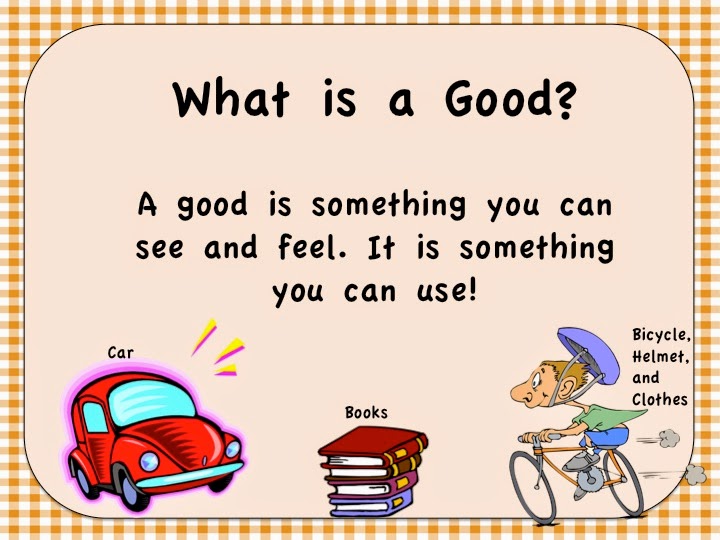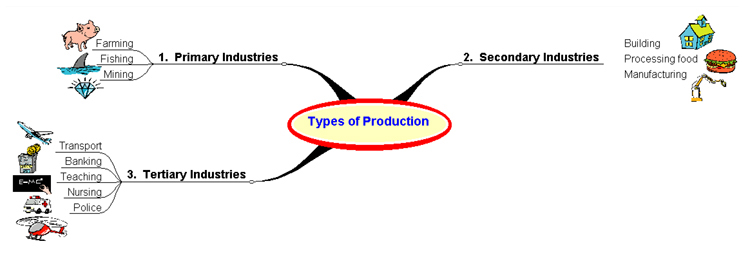AO2 You need to be able to:
Demonstrate application and analysis of knowledge and understanding Command
Terms: These terms require students to use their knowledge and skills to
break down ideas into simpler parts and to see how the parts relate: Analyse,
Apply, Comment, Demonstrate, Distinguish, Explain, Interpret, Suggest
The term 'business' is used to describe all the commercial activities undertaken by the various organisations, which produce and supply goods and services.
What is a business?
 |
|
 |
| Name 5 Goods you have bought this month |
Name 5 Services you have bought this month |
A business has many features. It is:
- decision making
- workers (employees), managers, directors and shareholders
- customers, suppliers, competitors, the environment, local, national and other governments
- uses factors of production
- to produce and sell goods and/or services
- so as to make a profit.

Classifying Business
Either by:
- private sector and public sector. Private enterprises are owned and run by individual people and groups: Public sector is owned and run by the State OR
- Type of activity -Primary, secondary, tertiary or quaternary OR
- size - there are number ways of measuring business size, such as capital employed, market share, sales turnover, profit and the number of employees.OR
- legal structure -The way that a business is set up affects its legal rights and responsibilities.

NB Quaternary Sector is to do with the knowledge based economy: information technology, information generation and sharing, media, research and development,knowledge-based services like consultation
Click here for a graphic explanation
Sectoral Change (World Bank)
Link to full article
Everything that grows also changes its structure. Just as a growing tree constantly changes the shape, size, and configuration of its branches, a growing economy changes the proportions and interrelations among its basic sectors— agriculture (Primary), industry (Secondary), and services (Tertiary) and between other sectors—rural and urban, public and private, domestic- and export-oriented.
Click here for a graphic explanation
Sectoral Change (World Bank)
Link to full article
Everything that grows also changes its structure. Just as a growing tree constantly changes the shape, size, and configuration of its branches, a growing economy changes the proportions and interrelations among its basic sectors— agriculture (Primary), industry (Secondary), and services (Tertiary) and between other sectors—rural and urban, public and private, domestic- and export-oriented.
One way to look at the changing structure of an
economy is to compare the shares of its
three main sectors—agriculture, industry,
and services—in the country’s total
output (Figure 9.1) and employment.1
Initially, agriculture is a developing
economy’s most important sector. But as income per capita rises, agriculture loses
its primacy, giving way first to a rise in
the industrial sector, then to a rise in the
service sector.
These two consecutive shifts are called industrialization and postindustrialization (or “deindustrialization”). All growing economies are likely to go through these stages, which can be explained by structural changes in consumer demand and in the relative labor productivity of the three main economic sectors.
These two consecutive shifts are called industrialization and postindustrialization (or “deindustrialization”). All growing economies are likely to go through these stages, which can be explained by structural changes in consumer demand and in the relative labor productivity of the three main economic sectors.

Activity:
Write a short Description of the different sectoral structures of the 3
kinds of economies in the diagram above and ssy which most closely describes Brazil.
